Exchange of calcium between bone and extracellular fluid takes place under the influence of certain hormones
(a) What will happen if more of Ca2+ is in extracellular fluid?
(b) What will happen if very less amount of Ca2+ is in the extracellular fluid?
(a) More Ca2+ concentration in extracellular fluid is associated with hyperparathyroidism. It causes demineralisation, resulting in softening and bending of the bones. This condition leads to osteoporosis.
(b) Very less amount of Ca2+ in extracellular fluid is associated with hypoparathyroidism. This increases the excitability of nerves and muscles, causing cramps, sustained contraction of the muscles of larynx, face, hands and feet. This disorder is called parathyroidtetany or hypercalcemictetany.
Topper's Solved these Questions
- BOOK - NCERT EXEMPLAR ENGLISHCHAPTER - LOCOMOTION AND MOVEMENTEXERCISE - Long Answer Type Questions6videos
LOCOMOTION AND MOVEMENT
- BOOK - NCERT EXEMPLAR ENGLISHCHAPTER - LOCOMOTION AND MOVEMENTEXERCISE - Very Short Answer Type Questions10videos
LOCOMOTION AND MOVEMENT
- BOOK - NCERT EXEMPLAR ENGLISHCHAPTER - EXCRETORY PRODUCTS AND THEIR ELIMINATION EXERCISE - Long Answer Type Questions6videos
EXCRETORY PRODUCTS AND THEIR ELIMINATION
- BOOK - NCERT EXEMPLAR ENGLISHCHAPTER - MINERAL NUTRITIONEXERCISE - Long Answer Type Questions8videos
MINERAL NUTRITION
Similar Questions
What happens when water is treated with
Ca3P2 ?View SolutionWhat happens when heavy water is treated with
Ca3P2View Solutionboth in cells and extracellular fluids , dibasic phosphate (HPO2−4) and monobasic phosphate (H2PO−4) act as acid base buffers to maintain
View Solution[A] : Extracellular fluid serves as the sanitary drainage line of the body
[R] : Extracellutar iiuid collects excess H2O,CO2 and metabolic wastes from all tissues of the body.View SolutionWhat happens when a sample of water containing Ca(HCO3)2 is boiled ?
View SolutionViscosity is the property of fluid by virtue of which fluid offers resistance to deformation under the influence of a tangential force.

In the given figure as the the plate moves the fluid particle at the surface moves from position 1 to 2 and so on, but particles at the bottom boundry remain stationary. if the gap between palte and bottom boundary is small, fluid particles in between plate and bottom moves with velocities as shown by linear velocity distribution curve otherwise the velocity distribution may be parabolic. As per Newton's law of viscity the tangential force is related to time rate of deformation -
FAαd'θdt but y=d'θdt=u,d'θdt=uy
then F=ηAuy,η= coefficient of viscosity
for non-linear velocity distribution -
F=ηAdudy
where uy or dudy is known as velocity gradiant.
The velocity gradient just near the bottom boundary is equal to -View SolutionViscosity is the property of fluid by virtue of which fluid offers resistance to deformation under the influence of a tangential force.
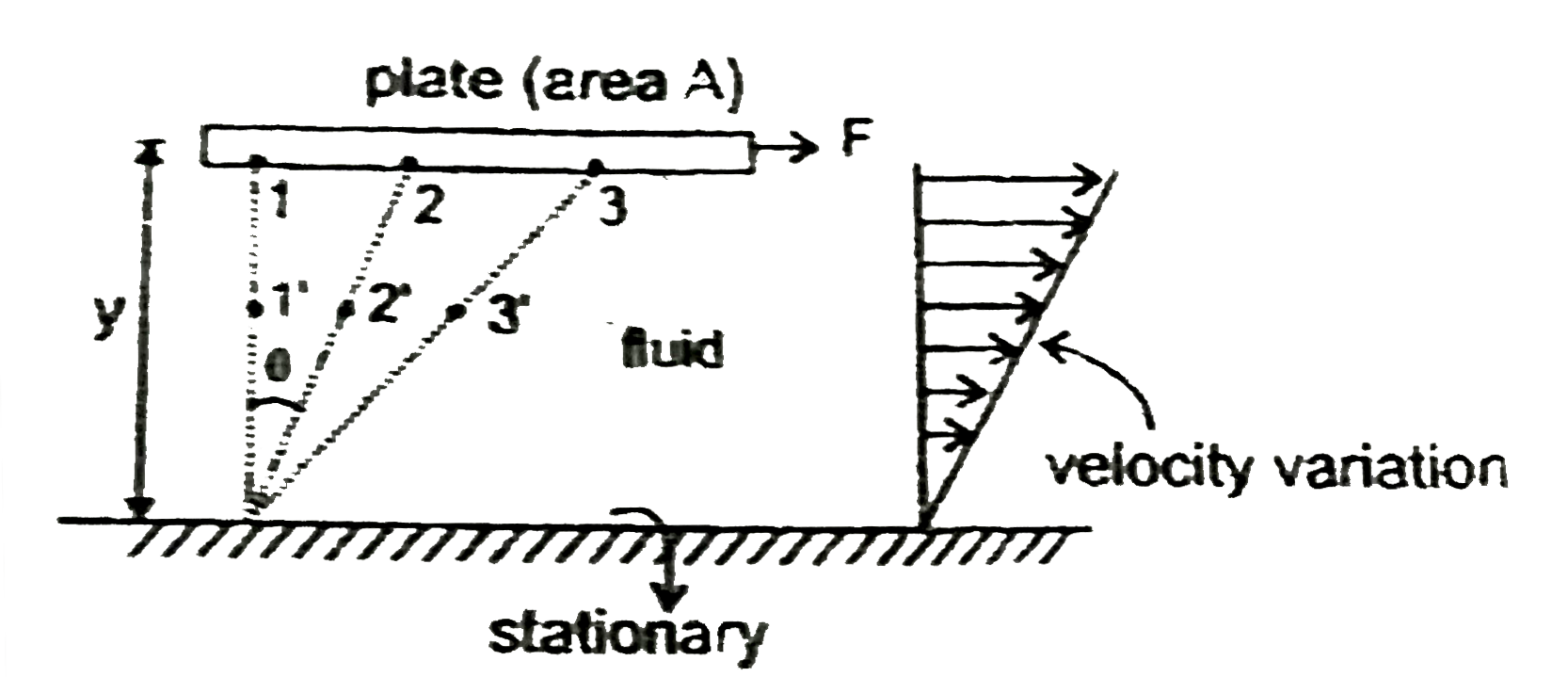
In the given figure as the the plate moves the fluid particle at the surface moves from position 1 to 2 and so on, but particles at the bottom boundry remain stationary. if the gap between palte and bottom boundary is small, fluid particles in between plate and bottom moves with velocities as shown by linear velocity distribution curve otherwise the velocity distribution may be parabolic. As per Newton's law of viscity the tangential force is related to time rate of deformation -
FAαd'θdt but y=d'θdt=u,d'θdt=uy
then F=ηAuy,η= coefficient of viscosity
for non-linear velocity distribution -
F=ηAdudy
where uy or dudy is known as velocity gradiant.
The velocity gradient just below the plate, in above problem is equal to - (per second)View SolutionViscosity is the property of fluid by virtue of which fluid offers resistance to deformation under the influence of a tangential force.
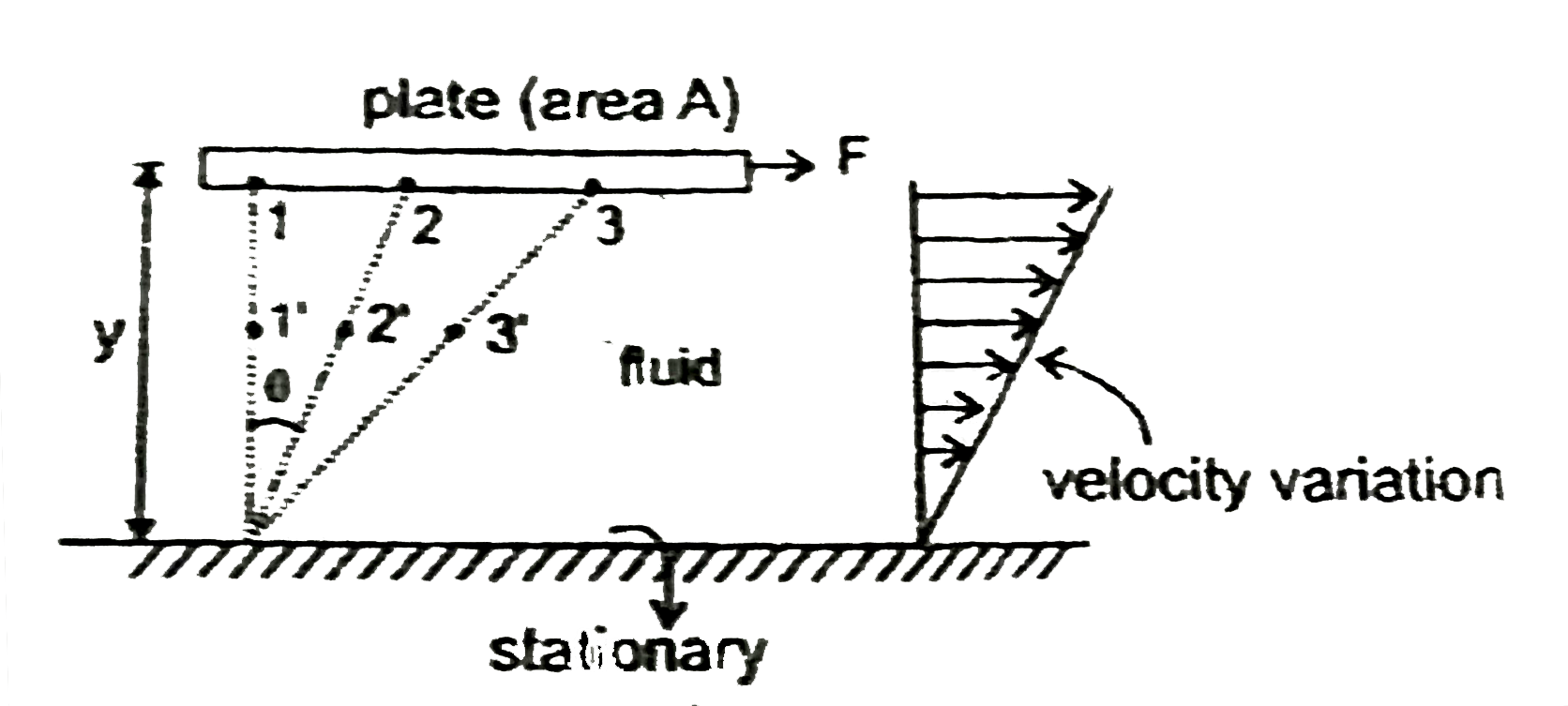
In the given figure as the the plate moves the fluid particle at the surface moves from position 1 to 2 and so on, but particles at the bottom boundry remain stationary. if the gap between palte and bottom boundary is small, fluid particles in between plate and bottom moves with velocities as shown by linear velocity distribution curve otherwise the velocity distribution may be parabolic. As per Newton's law of viscity the tangential force is related to time rate of deformation -
FAαd'θdt but y=d'θdt=u,d'θdt=uy
then F=ηAuy,η= coefficient of viscosity
for non-linear velocity distribution -
F=ηAdudy
where uy or dudy is known as velocity gradiant.
If velocity distribution is given as (parabolic)
u=c1y2+c2y+c3
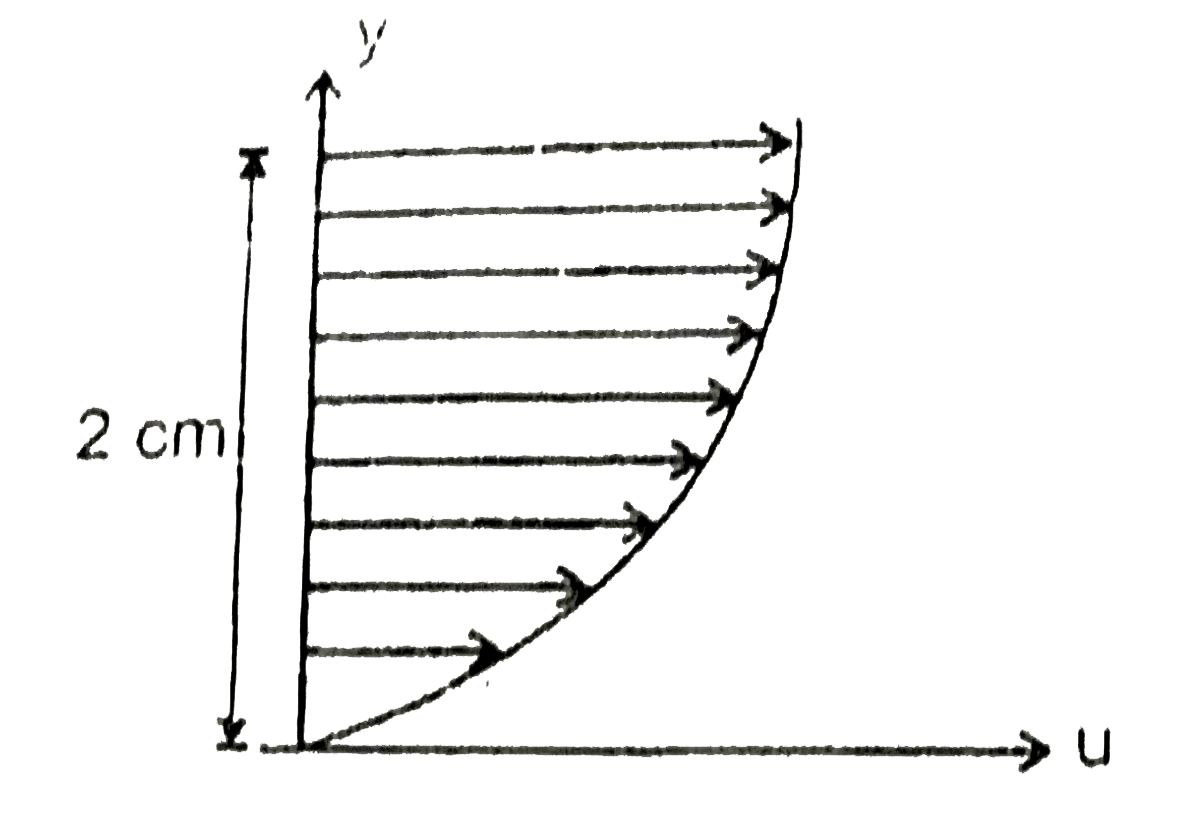 For the same force of 2N and the speed of the plate 2m/sec, and area of plate is 1 and viscousity is .001, the constant C1,C2 & C3 are View Solution
For the same force of 2N and the speed of the plate 2m/sec, and area of plate is 1 and viscousity is .001, the constant C1,C2 & C3 are View SolutionViscosity is the property of fluid by virtue of which fluid offers resistance to deformation under the influence of a tangential force.
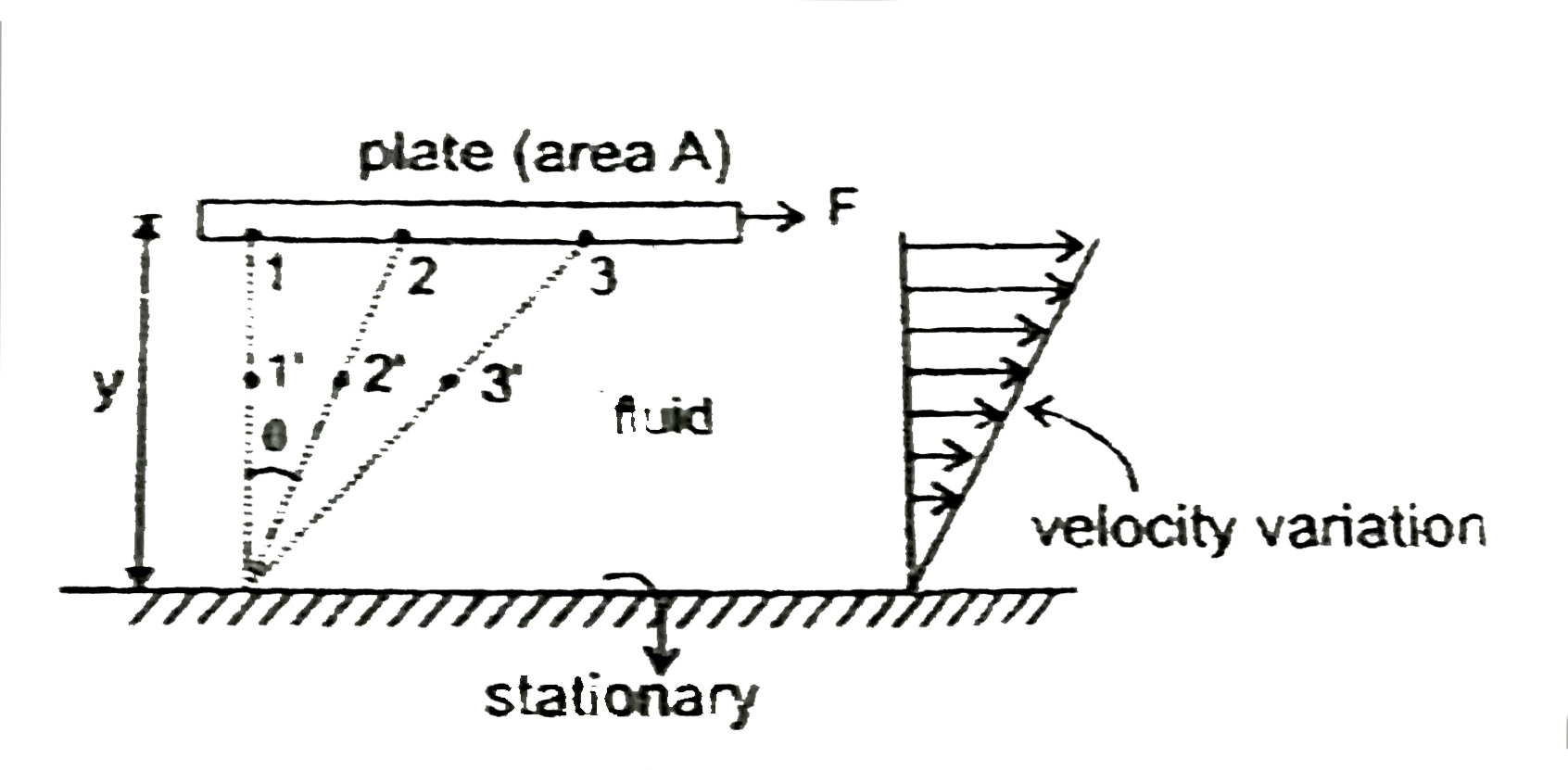
In the given figure as the the plate moves the fluid particle at the surface moves from position 1 to 2 and so on, but particles at the bottom boundry remain stationary. if the gap between palte and bottom boundary is small, fluid particles in between plate and bottom moves with velocities as shown by linear velocity distribution curve otherwise the velocity distribution may be parabolic. As per Newton's law of viscity the tangential force is related to time rate of deformation -
FAαd'θdt but y=d'θdt=u,d'θdt=uy
then F=ηAuy,η= coefficient of viscosity
for non-linear velocity distribution -
F=ηAdudy
where uy or dudy is known as velocity gradiant.
In the given figure if force of 2N required to maintain constant velocity of plate, the value of constant C1,&C2 are -
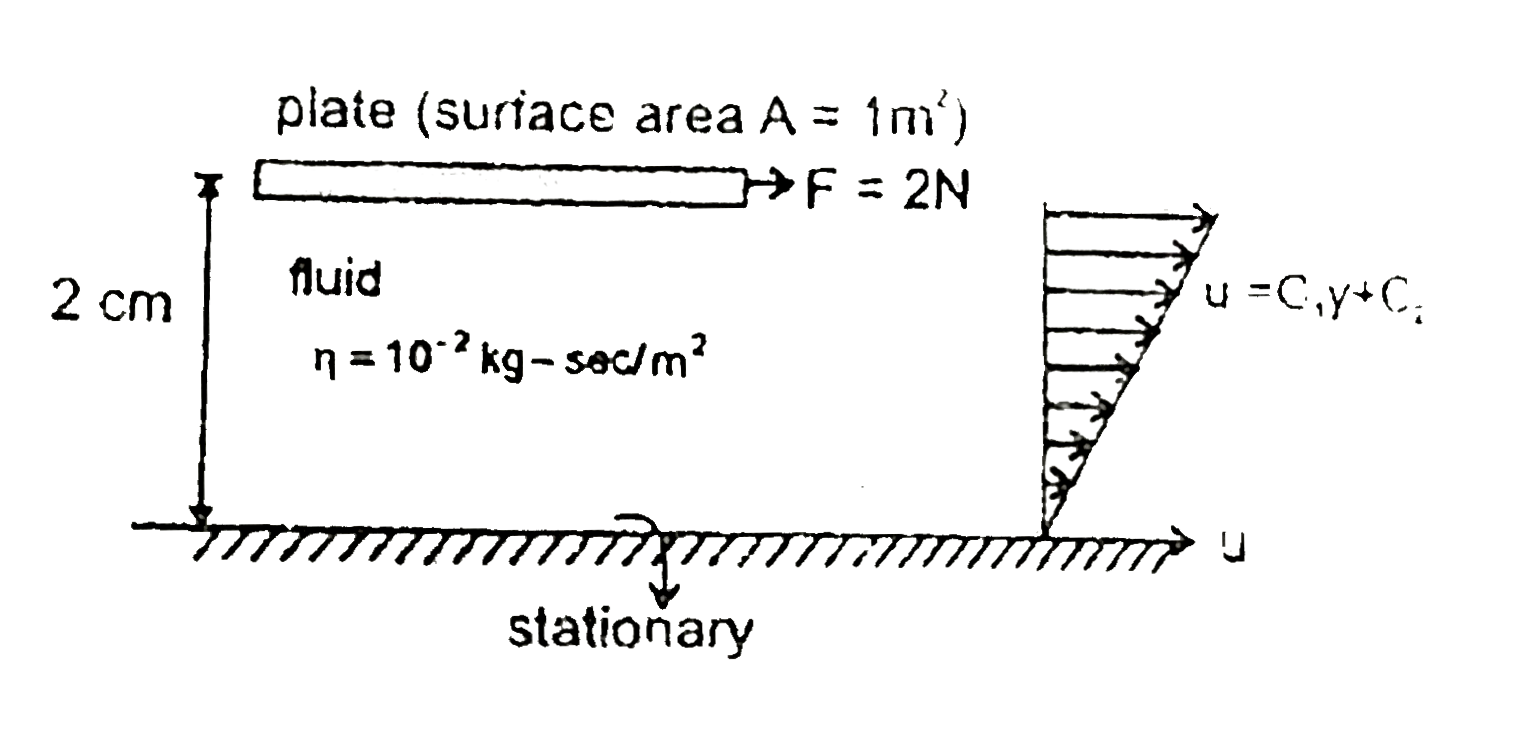 View Solution
View Solution(a) When a bright silver object is placed in the solution of gold chloride, it acquires a golden tings but nothing happens when it is placed in solution of copper chloride. Explain this behaviour of silver.
[Given : E∘Cu2+/Cu=+0.34V,E∘Ag+/Ag=+0.80V,E∘Au3+/Au=+1.40V]
(b)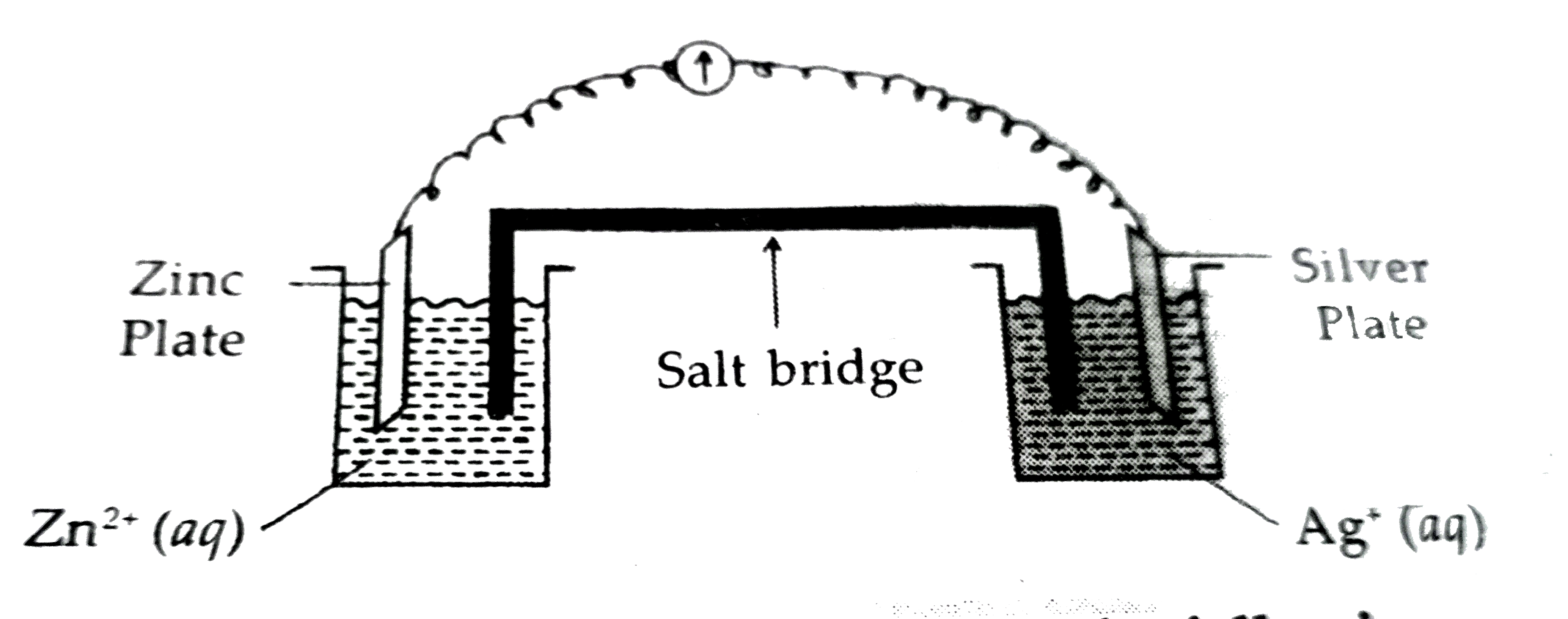
Consider the figure given above and answer the following questions :
(i) What is the direction of flow of electrons?
(ii) Which is anode and which is cathode?
(iii) What will happen if the salt bridge is removed ?
(iv) How will concentration of Zn2+ and Ag+ ions be affected when the cell functions ?
(v) How will concentration of these ions be affected when the cell becomes dead ?View Solution

